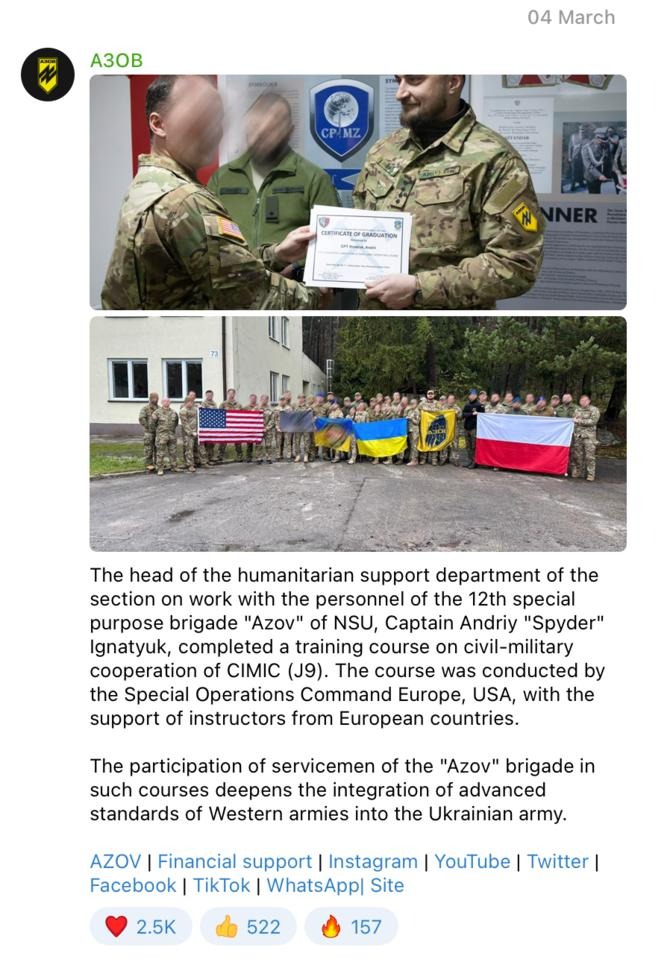The Biden administration’s decision to allow the Azov Brigade, a Ukrainian military unit, to receive U.S. weaponry and training has raised concerns due to the unit’s alleged human rights violations and neo-Nazi ties. However, a photo posted by the unit itself suggests that the U.S. has been providing support since December of the previous year. This raises questions about the nature of the arms ban and the authority under which it was imposed.
There are two possible mechanisms that could have prohibited arms transfers to the Azov Brigade: a specific law passed by Congress and the Leahy laws, which block support to units responsible for grave rights violations. The State Department has not clarified when the apparent ban started, but a deputy Azov commander and media reports indicate that some form of prohibition has been in effect for nearly a decade.
The State Department claims that the congressional prohibition does not apply because it only barred assistance to the Azov Battalion, a predecessor to the Azov Brigade. The original unit had faced scrutiny for alleged human rights violations and ties to neo-Nazi and white supremacist ideologies. However, experts argue that the State Department should provide a more detailed rationale for its decision, given the complex history of reorganizations and official status of the Azov unit.
There is evidence to suggest that U.S. military support may have been provided to the Azov Brigade before the recent announcement. The unit’s official Telegram channel and social media posts mentioned American military training, including a course on civil-military cooperation provided by U.S. Special Operations Command Europe. The State Department and the Department of Defense have declined to comment on the legality of this training.
The State Department spokesperson claims that there is no evidence of human rights violations by the Azov Brigade that would bar American aid under the Leahy laws. They also argue that Russia has tried to discredit the unit by conflating it with its predecessor, the Azov Battalion militia. However, some representatives are moving to strengthen the statutory ban on military support to Azov, indicating that there are concerns about the White House’s view.
The State Department’s rationale for lifting arms restrictions is based on the claim that the composition of the battalion and the brigade are “significantly different.” However, there is significant continuity within the Azov unit, with commanders and members linked to white supremacist and neo-Nazi ideologies. The unit’s own words suggest that the Azov Battalion was never actually dissolved but was subsumed into the official Ukrainian military structure.
Former officials and experts have differing opinions on whether there was a standing restriction on Azov. Some argue that there were no concerns and that the unit has been eligible for aid since at least 2022. Ukrainian officials have suggested that there was a ban, which was raised with Secretary of State Antony Blinken. However, there is uncertainty surrounding the issue.
In conclusion, the decision to provide aid to the Azov Brigade has raised questions about the nature of the arms ban and the authority under which it was imposed. The State Department’s limited rationale for lifting arms restrictions and the unit’s own words suggest that there may be continuity between the Azov Battalion and the Azov Brigade. The issue remains contentious, with some representatives seeking to strengthen the ban on military support to Azov.


